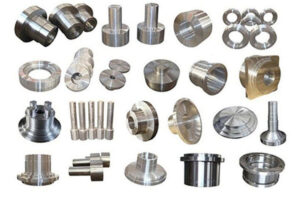The Ultimate Guide to CNC Lathe Machining: Everything You Need to Know
 CNC lathe machining is a process that has revolutionized the manufacturing industry. It involves the use of computer-controlled machines to produce high-precision parts and components. In this post, we will explore everything you need to know about it, from its history to its applications and benefits.
CNC lathe machining is a process that has revolutionized the manufacturing industry. It involves the use of computer-controlled machines to produce high-precision parts and components. In this post, we will explore everything you need to know about it, from its history to its applications and benefits.
History of CNC Lathe Machining:
CNC lathe machining has its roots in the Industrial Revolution, when machines were first used to automate manufacturing processes. However, it wasn’t until the 1950s that the first computer-controlled machines were developed. These early machines were large and expensive, and were primarily used by the aerospace and defense industries.
Over the years, it has become more accessible and affordable, and is now used in a wide range of industries, including automotive, medical, and electronics.
How CNC Lathe Machining Works:
CNC lmachining involves the use of a computer-controlled machine to shape and cut materials. The machine is programmed with a set of instructions that tell it how to move and cut the material. The material is held in place by a chuck, and a cutting tool is used to remove material from the workpiece.
The cutting tool is controlled by a series of motors and actuators, which move the tool along the X, Y, and Z axes. The machine can also rotate the workpiece, allowing for complex shapes and contours to be created.
Applications
CNC lathe machining is used in a wide range of industries, including:
1. Automotive: it is used to produce engine components, transmission parts, and other critical components.
2. Medical: it is used to produce surgical instruments, implants, and other medical devices.
3. Electronics: it is used to produce components for electronic devices, such as connectors, switches, and housings.
Benefits
CNC lathe machining offers a number of benefits over traditional machining methods, including:
1. Precision: it is capable of producing parts with extremely high precision, ensuring that they meet strict tolerances and specifications.
2. Efficiency: it is much faster than traditional machining methods, allowing for higher production rates and lower costs.
3. Flexibility: it can be used to produce a wide range of parts and components, from simple to complex shapes and contours.
CNC Machining Manufacturer
|
CNC product materials
|
Aluminum alloy, copper (purplish red luster), stainless steel, titanium alloy, magnesium alloy, zinc alloy
|
|
CNC machining accuracy
|
±0.1mm/100mm
|
|
CNC maximum molding size
|
3000*1200*850mm
|
|
Surface treatment
|
Deburring, polishing, polishing, sand blasting, oxidation, electroplating, black oxide, wire drawing, silk screen, laser
engraving, spraying metal oil, powder spraying, chromate, spraying rubber oil, silk screen, heat treatment, passivation, etc. |
Conclusion:
CNC lathe machining is a powerful tool that has revolutionized the manufacturing industry. It offers a number of benefits over traditional machining methods, including precision, efficiency, and flexibility. Whether you are in the automotive, medical, or electronics industry, CNC machining can help you produce high-quality parts and components that meet your exact specifications.






